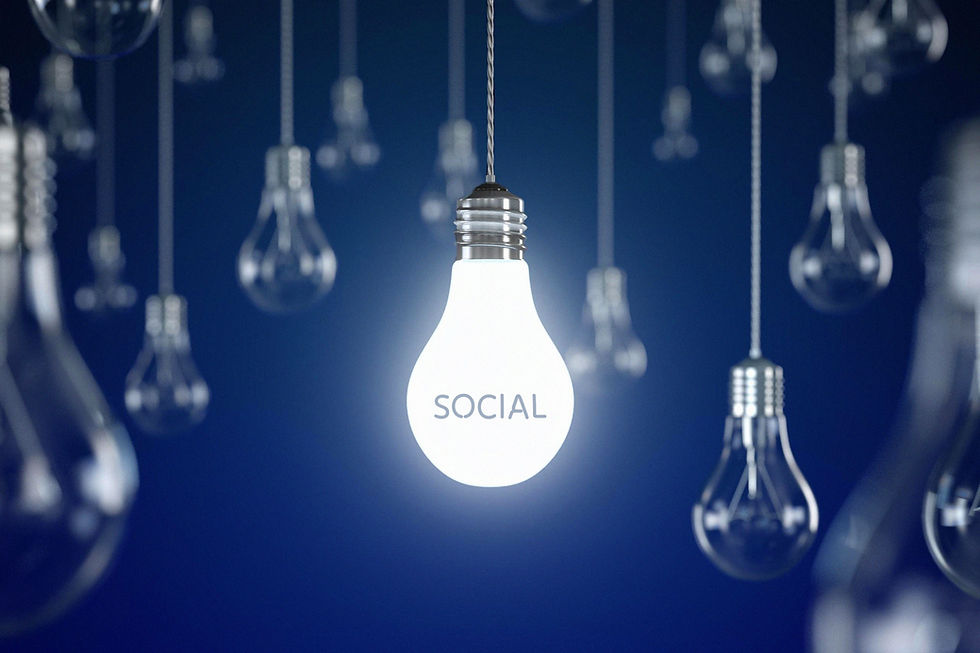The advantages of animated motion graphics
- davidhaslop
- May 19, 2022
- 4 min read
Updated: Nov 1, 2023

What are motion graphics?
Motion graphics have been a feature on our screens over the last few decades. They come in all forms, from television commercials to title sequences to music promos. They have also been a feature in the rise of social media. They are an effective way to draw in the viewer on the smaller screen. The movement of graphics helps with audience engagement. A short branded animation presented within a social media feed is more eye-catching than a still graphic. Businesses have become savvy to this, and we have seen more motion content within this area in recent times.
The use of motion graphics can help bring a brand message to life. TV commercials often feature animated brand logos, which bring personality to a brand and value to a campaign. Title sequences for blockbuster boxsets viewed on streaming services feature motion graphics, setting the scene for the latest trending series to binge-watch. Motion graphics have also become immersive, with uses in virtual reality bringing another dimension to the medium. We also see 2D and 3D motion graphics used more frequently in outdoor advertising. Think of the animated ads on the tube in London or moving live concert visuals at festivals and live events.
3D projection mapping has featured some incredible motion graphics in recent times. Animated content is projected onto 3D surfaces, creating a rich viewing experience for the audience. It allows motion graphics to have an alternative size and shape to the traditional 16x9 aspect ratio we often see on tv and the web. Animation gets produced on a flat unwrapped canvas before being wrapped around a physical 3D object using bespoke software and several projectors. Large scale events and product launches are good uses for projection mapping. It can create excitement and genuinely surprise the audience. 3D projection-mapping using motion graphics, is often a feature at car launch events. A car brand would be able to use the technology to show the elements of the car building piece by piece, showing the audience the internal components. The story could continue with the exterior bodywork revealed before being sprayed with colour. You could even project behind the car, to give the impression the car is travelling at speed. In reality, the car would be stationary with the motion graphics doing their job to create the illusion of speed. How the motion graphics work with the 3D canvas is instrumental in the overall impact and effectiveness of the piece. In summary, projection mapping is a great way to advertise a product, create a sense of drama, and kickstart a campaign.
Will motion graphics suit my campaign?
Several factors will help decide if motion graphics are a good fit for the needs of a business campaign. For example, a company creating static social media content aiming to gain attention from potential new customers could introduce motion graphics to help them stand out more. How about a company which has rebranded and would like to launch its new logo in an impactful way. Bringing the brand to life with motion graphics would enable the many facets of the brand campaign to resonate with the desired audience. Adding motion to the logo could show ways it could animate on-screen. How the brand transcends across other touchpoints such as print and digital could be brought to life too.
Motion graphics could suit your project if you are looking to convey a lot of information. An example here could be an educational video to help people understand how a product works by breaking down and explaining the complex details. Explainer videos are a great way to articulate facts dynamically and expressively. By applying motion graphics, a dry script can become a dynamic and engaging piece of visual communication.
Title sequences and promotional videos are other areas covered extensively by motion graphics. Suppose a title sequence for an upcoming drama series needs creating. Graphic titles could be animated and combined with still photography or live-action video to help set the scene at the start of each episode.
TV channels regularly require motion graphics too. Think of how many channels there are now available. Each channel needs its own identity to help distinguish it from the others competing for viewer ratings. Motion graphics can assist in the creation of animated idents, lower third straps, and a whole host of content for different broadcasting situations. A channel will often have a brand toolkit of animated elements and principles around how these work in broadcast.

Where are motion graphics used?
Some general uses of motion graphics are listed below. There are many ways they reach our screens. This certainly isn't an exhaustive list but indicates some of the more common applications of the medium.
. Explainer videos
. Social media campaigns
. Branded promos
. Projection mapping
. TV channels
. Title sequences
. Commercials
. Music promos
. Corporate films
Can motion graphics add value?
The creation of motion graphics can add value in several ways. They can help businesses looking to liven up their brand and present information in a more compelling way than static graphics. They can get people talking and create a buzz. Motion graphics can help deliver a memorable impression for a brand, creating the potential to attract new customers. A considered approach can elevate an already powerful brand campaign to even greater heights.
Motion graphics will continue to evolve in line with design trends. Where things go over the next few years will be very interesting indeed. We are glad to be working in this exciting industry and seeing how things change. If you'd like to discuss an upcoming project we'd love to help get things off on the right path.


